Does Cooking Wine Go Bad
Wine is one of the most popular alcoholic beverages globally, but how long does it last? And does wine go bad?
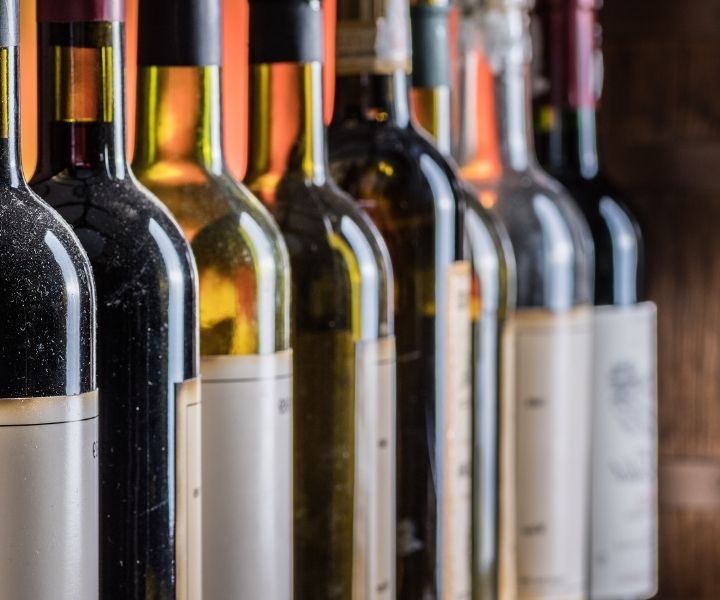
The short answer to this question is yes; wine can go bad. But you're not going to like what happens when it goes bad. For example, most people don't know that once a bottle of wine has been opened and exposed to oxygen, it begins to deteriorate and change flavor very quickly.
Our guide will help you learn all about storing your bottles properly, so they stay fresh for as long as possible! We'll also teach you how to determine if a bottle of wine has gone bad or not by checking out some common signs that indicate spoilage has occurred.
Finally, we'll give you tips on how best to store your wines depending on their type (red vs. white) and level of quality (cheap vs. expensive). By following our advice, your favorite bottles will taste great for years instead of just days or weeks!
Is Wine a Perishable Item Like Everything Else?
Yes. Everything is perishable, including wine. Alcohol can dry out and eventually go bad — which anyone who's ever had a glass of undrinkable vodka knows.
But wines are less likely to do this than other drinks because grapes are used as the primary fermentation agent (instead of grain). In addition, grape juice contains many compounds that act as natural preservatives to inhibit spoilage.
So grape-based beverages, like wine and grapes themselves, don't last forever but can be savored for months or even years without spoiling too much.
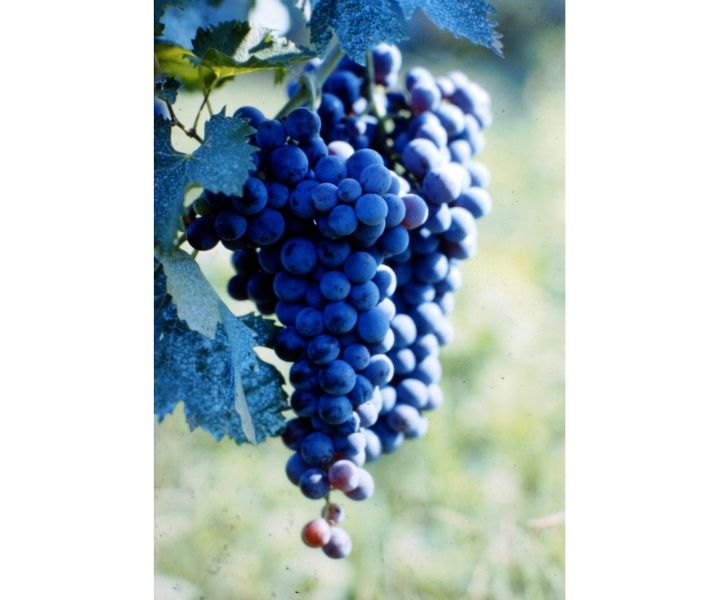
The downside is that when they do go bad, they change flavor dramatically and become unpleasant to taste.
How Long Does Unopened Wine Last?
The answer to this question is determined by two key factors:
- The type of wine, and
- The conditions under which it was stored.
An unopened bottle has a substantially longer shelf life than one that has been opened. After all, wine is meant to last a long time.
That is, after all, the goal of fermenting the grapes and enabling the alcohol to develop. Yeast is then added to break down sugar and convert it to alcohol during the fermentation of grapes into wine.
In two ways, this aids in the preservation of the juice. First, because the sugar level is lower, bacteria don't have as much to feed on. This slows the spoiling process. Second, alcohol makes it far more difficult for most germs to live, which helps to prevent spoiling.
It's worth noting that most wines are supposed to be consumed soon after they've been bottled when their flavor, scent, and notes are at their greatest. In general, if the wine costs less, it should be used within a year or two after purchase–preferably straight away! These aren't poor-quality wines by any means, but they're also not the type that improves with age.
When people talk of maturing great wine, they usually mean full-bodied reds like Nebiolllo, Tempranillo, or Sangiovese that are intended to mature over time. Unfortunately, these are usually costly, and you can't just ignore them if you want them to age properly.
Wine connoisseurs ensure that the finest wines are stored in ideal conditions to allow them to acquire their full flavor over time.
Below is a table explaining how long different types of wine last unopened:
| Wine Type | Shelf Life After Expiration Date |
| Red Wine | 2-3 years |
| Sparkling Wine | At least 3 years |
| Rose Wine | About 3 years |
| Fortified Wine | 10-20 years |
| White Wine | 2-3 years |
The Shelf Life of Unopened Wine and Does it go Bad?
Unopened wine has a shelf life of 1–20 years, depending on the type of wine. An unopened bottle of wine has a far longer expiration date than one that has been opened.
Even though wine is manufactured to last longer than other drinks such as plain grapes or grape juice, it will eventually degrade. In general, the most common types of wine have the following shelf lives if stored unopened:
- White wine that hasn't been opened and is 1-2 years past its expiration date.
- Red wine that has not been opened shelf life: 2 to 3 years after expiration.
- Cooking wine has a shelf life of 3-5 years once it has passed its expiration date.
- Fine wine has a shelf life of 10 to 20 years.
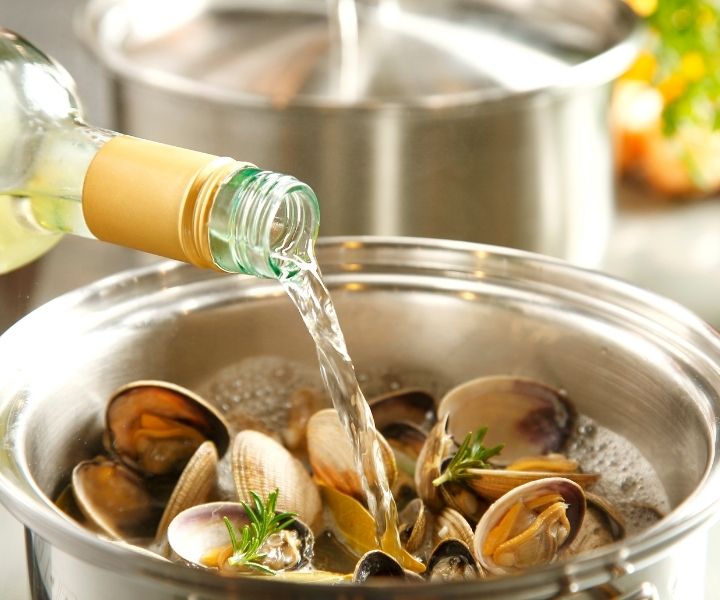
Does Red Wine Go Bad After Opening?
If you prefer to take your time with your wine, red wines are the way to go. The majority of red wine bottles can be drunk up to five days after they've been opened, as long as they're stored properly – in a cold, dark spot away from direct sunlight.
Does Cooking Wine Go Bad?
When it comes to wines created solely for cooking, they always have a "Best Before" date on them, which lets us know when the wine will expire. When compared to regular wines, cooking wine is manufactured slightly differently. It's salty and preservative-free, and it lasts for a certain amount of time.
Cooking wines can be found in the following varietals:
- White wine
- Dry wine (white and red),
- Nutty wines
- Fortified red wines
- Rice wine
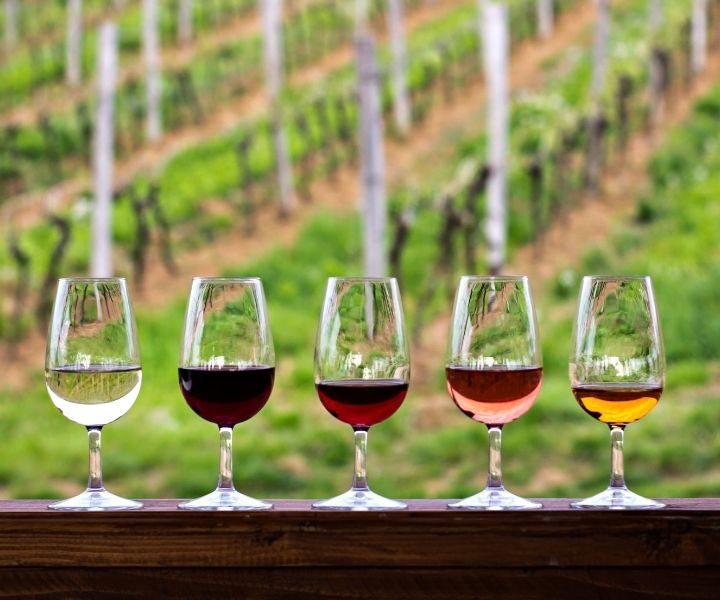
All of these wines have the potential to spoil at some point, and you should discard them immediately if they go off.
When Does White Wine Go Bad?
To keep the cork from drying out, wine should be stored in cool, dark settings with bottles on their sides so that the wine can last for a longer time and be safe to drink even after the expiration date.
How to Tell if Wine Has Gone Bad
You finally cracked open that bottle of wine you'd been eyeing in your kitchen and found it to be excellent, but you couldn't finish it. As a result, you set it aside for later. Later becomes a week or even two, and you still haven't done it.
Has it become spoiled? Does opened wine go bad? Is it still safe to drink? Unfortunately, the answer isn't as simple as it appears. A few elements decide whether a bottle is good to drink or not–even if the quality isn't as good as it was on the first day.
Before pouring yourself a glass of wine that has been matured, you might want to give it a once-over. Keep an eye out for these telltale indicators that your wine is starting to spoil:
What Does it Look Like?
Take a peek at the bottle first. Instead of immediately analyzing the contents of the bottle, examine the cork. Your wine may have gone off if it appears to be dislodged or pushed out of the bottle. The cork being forced out of the bottle indicates that the wine was scorched because heat expands, as we all know.
Heat is the worst enemy of an unopened bottle of wine, as it can cause early aging and oxidation. Similarly, if the cork breaks when you try to open it, it's possible it's gone bad or was stored incorrectly.
If you get used to looking at wine, you'll be able to tell if it's gone bad. A color shift—purple to fiery brownish, paler white to golden, for example—and/or opaqueness are crucial signs.
Although some unfiltered wines are less clear, to begin with, a change in opaqueness usually signals that something has gone wrong. On the other hand, aged wines may have a deeper tint, which is quite acceptable.
What Does it Smell Like?
When a wine has gone off, certain scents may be detectable. A strong, vinegar-like odor, a wet odor, or a barnyard-like odor are all possibilities.
Before pouring, take a brief sniff of your bottle after it's been opened. If your wine has been "corked" or has "cork taint," it will smell like damp cardboard or perhaps a wet dog.
If the wine has oxidized, your nose can also inform you. Keep an eye out for harsh acidic odors that resemble nail polish remover.
The smell of the wine can also change if it has become stale. For example, some individuals think stale wine smells like nuts, while others believe it smells like burnt marshmallows or applesauce.
Some wine may spoil before it is opened, which is usually due to a flaw in the wine. A faulty wine may have a garlic odor or cabbage, or burnt rubber odor.
How Does it Taste?
The taste will almost certainly follow the scent. If the smell bothers you, the same is likely to happen once you take a sip.
It's also a good idea to taste a little of your wine to see whether it's gone bad. A wine that has gone bad usually has a harsh, sour, or burnt flavor to it. A tiny amount of substandard wine will have no negative impact on your health.
Can Expired Wine Make You Sick?
Will a bottle of wine that has gone off make you sick? Certainly not. It's not possible, however, that you'll ever appreciate it. So if you feel you're drinking substandard wine, the best thing you can do is uncork a new bottle. You're not drinking merely for the purpose of it, after all. You're drinking because you want to have a good time.
However, it can be considered unsafe for human consumption only when the wine is contaminated with germs that are hazardous to humans. This is quite rare, and you'd have to taint your wine on purpose for it to happen.
The alcohol in the wine is the fundamental reason it can't be tainted to the point of being hazardous to humans. In addition, wine's alcohol concentration functions as an antimicrobial, making it safe to drink.
Why Does Wine Go Bad?
There are various reasons why a bottle of wine can spoil; therefore, we'll cover the most prevalent ones. Some are caused by oxygen exposure, while others are caused by the entrance of bacteria or yeast that you don't want in your wine bottle. In addition, microbes, chemical imbalances, and faulty corks or seals can all contribute to sour wine.
If your wine has a horrible odor that reminds you of band-aids, a barnyard, farm animals, or dung, there may be too much Brett or Brettanomyces in the content. This yeast bacteria adds a wonderful richness to your wine in tiny amounts, but too much will spoil the bottle. Brett in wine is frequently caused by poor winery hygiene. However, it can also be caused by the grapes used by winemakers.
Any wine lover should know how to spot a corked bottle. If your wine has a cork taint, you may detect a wet cardboard odor similar to that of a wet dog. Cork is not as stable and consistent as artificial materials because it is a natural product.
It's acceptable that cork flaws in your wine bottle occur from time to time, and they're beyond the winemakers' control. A molecule called TCA is responsible for the odor that makes you think the wine is corked. Trichloroanisole is a chemical that mold may leave behind in the cork even if the mold is no longer present and produces a strong odor.
A trace of TCA in your wine can generate unpleasant flavors, rendering the bottle unfit for consumption. A tiny level of cork taint can deprive your wine of its wonderful qualities while masking the unpleasant odors. If you're drinking an older bottle of wine and notice mold on the cork, don't be alarmed.
This is usually limited to the cork area that never comes into touch with the wine, and it in no way indicates that the bottle is corked and unfit to drink. Remember that a corked wine merely means that TCA is present; an old cork that has come apart and fallen into your bottle does not mean the wine is damaged.
The Proud Italian's Top Tips for Storing Wine Properly
Wine, if properly stored, can last for decades, even centuries, increasing in value and quality. However, even the best wines in the world can be ruined by improper storage.
Here are our easy and top Proud Italian guidelines for correctly storing wine.
1. Instead of Using a Regular Refrigerator, Use a Wine Refrigerator
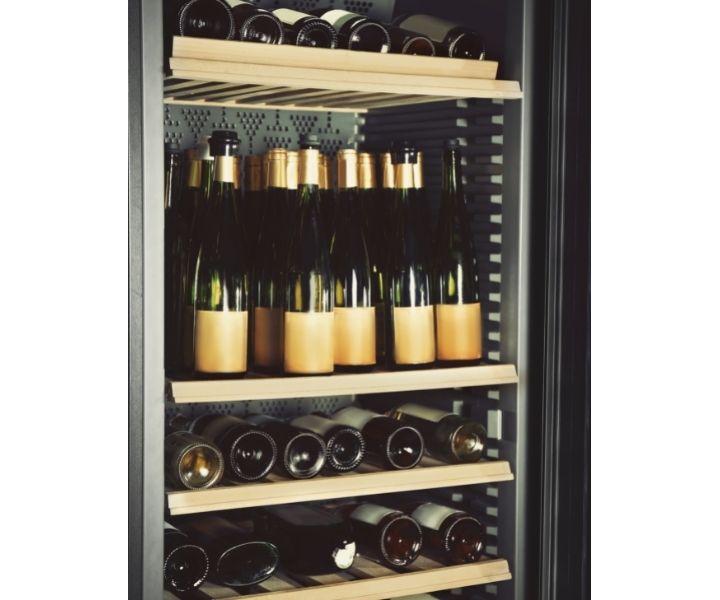
Does wine have to be refrigerated after opening? For the following reasons, long-term wine storage in your kitchen refrigerator is not recommended.
- It keeps the temperature below 4°C (39°F) or close to it. Your wine will be frozen and will not age well as a result.
- When the wine is frozen, it might push the cork out and expose it to oxygen.
- In a refrigerator, humidity levels are extremely low and can vary by several degrees during the day.
- Cross-contamination from odors can result from exposure to food and other beverages.
A wine refrigerator is required if you wish to store wine for extended periods. It keeps humidity at a stable level and the temperature at a consistent level.
2. Storage Should be at the Right Temperature
The ideal temperature for wine storage is around 13°C.
In actuality, however, most wines have different requirements. Red wine, for example, should be stored between 12 to 19 degrees Celsius (53 to 66 degrees Fahrenheit), while champagne should be kept at lower temperatures.
Wine should not be allowed to freeze or be heated above 20°C (68°F). Any kitchen countertop wine rack or a regular refrigerator is out of the question for long-term storage.
Furthermore, too many temperature swings can harm your wine. So to keep it at a consistent temperature, don't take it out of storage too often.
3. Maintain the Proper Humidity Level
Wine enthusiasts have been known to find unique places to preserve their prized wines from as early as 6000 BC – in terracotta jugs underground, in a wine cave or underground wine chambers.
Although a modern wine cellar lacks the drama of a traditional cellar, it replicates similar storage conditions, including maintaining an appropriate humidity level.
If you live in a dry area, keeping a pan of water or spraying a little water on your cellar floor will assist. However, if you reside in a high-humidity area, you may want to consider investing in dehumidifiers.
4. Avoid Putting Wine in Direct Sunlight
Direct or excessive light is a no-no, even if you plan on drinking your wine within a few days.
Put them in a container or wrap them with towels. Use low-intensity, low-heat lightings, such as LED lights and low-voltage wall sconces.
In the long run, you'll need to keep them out of direct sunlight or artificial light.
5. Horizontally Store the Bottles
To keep the corks moist, keep your corked bottles horizontally. This will keep oxygen out of the bottle as well.
Horizontal wine carriers can save a lot of storage space if you have an extensive collection. However, if your bottle tops are metal or plastic, you can store them any way you like.
6. Keeping Open Bottles Safe
It's preferable to keep the number of times you open a bottle to a minimum.
If you want to enjoy a glass of your favorite wine from a bottle, make sure you have the necessary wine accessories on your wine glass racks, such as a bottle opener, decanter, and stemware.
Also, remember to close the bottle before returning it to your storage properly. This can be accomplished by:
- Allowing the cork to settle back into its original place by covering it with wax paper.
- Rubber stoppers were used in case of missing or damaged corks.
- Using a wine vacuum pump to remove all of the air from the bottle
After you've closed it, return it to the cooler and store it at the same temperature and humidity as before.
7. Avoid Vibrations
If you're not storing your bottle in a professional cellar, keep in mind that even little motions and sounds will generate vibrations in your wine, which will affect the aging process.
Even in a cellar, vibrations might cause damage to your collection. This is especially true if you live close to a subway or freeway.
If you're short on space, simply wrap your bottles in Styrofoam or bubble wrap and store them in a room you don't use often. Also, don't pick them up or move them around too much.
I Did Not Store my Wine Properly; What Now?
The solution depends on how you stored it.
Here's how to store wine after opening:
If you stored the wine in a stainless steel container or wood barrel, it is likely safe for consumption as long as you drink it within a short amount of time (perhaps hours) and don't let it get too warm. The reason is that unlike glass, which damages wine with its ultraviolet rays over time, stainless steel does not absorb or bounce back UV rays like glass.
Does wine need to be refrigerated? Not to mention that regardless of whether your container was made out of glass or metal, refrigerating the liquid will keep it in good condition because cool temperatures are what'll slow down spoilage-causing microorganisms.
Types of Wine That Age Well
A wine that has been allowed to age develops unique characteristics that can't be found in new wine. It also allows you to try wine from a year associated with significant memory, such as the year of your wedding or the birth or adoption of your child.
The best-aged wine is also a joy to taste, a one-of-a-kind transformation in a bottle that you can enjoy with friends on any occasion, from a hot summer day to a chilly winter evening.
Some wines do not age well. Sour vinegar smells or weirdly nutty or burnt scents may be detected in an old wine that wasn't designed to be matured. Your wine may have a musty or cabbage-like aroma, as well as dull, lifeless fruits.
Wines with the ability to age have specific properties that contribute to their longevity. Approximately 98 percent of wines on the market are meant to be consumed right away or aged for no more than five years. Long-term cellaring will benefit only 2% of wines. However, that 2% can develop into something lovely, and they are a treat to taste.
Whether they are red or white wines, good aging wines will have some qualities in common. The ideal aging candidates have a healthy structure and equilibrium. Tannins, residual sugar, alcohol, and acidity contribute to a longer lifespan, with more acidity and tannins helping to extend it.
If your wine contains a moderate to high level of residual sugars, it will age nicely. The presence of alcohol aids in this process as well, but fortified wines benefit the most. If there isn't enough acidity in non-fortified wines to balance the alcohol, it can have the reverse effect.
Here's a list of some of the wines that age well:
- Tempranillo: This is without a doubt one of the best long-term aging varieties. The Rioja-nese are well aware of this and have developed a system based on aging.
- Cabernet Sauvignon: is a red wine made from grapes. Because of the enormous diversity of quality levels and locales, Cabernet is quite varied. Buy wines with a deep color, a relatively low pH, greater acidity, balanced alcohol levels, and visible tannins.
- Merlot: It ages just as well as Cabernet Sauvignon, despite appearances to the contrary. With time, wines become softer and smokier. Right-bank Bordeaux is an excellent place to begin when it comes to aging wines.
- Sangiovese: Sangiovese is another excellent grape variety to age for a long time because of its intense acidity. This wine mellows down with age and develops delicious figgy flavors. For a cellar-worthy example, go no further than Brunello di Montalcino.
- Monastrell: also known as Mourvèdre, is a wine with many tannins and a lot of colors. This grape does not normally come into its own in the Bandol region of Provence until it has been aged for at least ten years. The flavors will be profound, spicy, and rustic.
- Nebbiolo: Collectors' minds are seared with the regions of Barolo and Barbaresco as the sites to hunt for age-worthy wine. Why? Nebbiolo makes wines with a high tannin content that softens and sweetens with age.
- Aglianico: Aglianico used to be nearly undrinkable until it had matured for at least a decade. The notes of cured meats and tobacco are exceptionally flavorful and powerful in these wines.
- Xinomavro: Xinomavro is a newcomer to the Greek wine scene, resembling Nebbiolo in style, with the greatest specimens providing unusually high tannin levels.
With this information, you should enjoy your wine for years and not have to worry about it going bad. Remember that the key is proper storage!

Does Cooking Wine Go Bad
Source: https://theprouditalian.com/does-wine-go-bad-plus-storage-and-aging-information/
Posted by: eastlandrodut1948.blogspot.com

0 Response to "Does Cooking Wine Go Bad"
Post a Comment